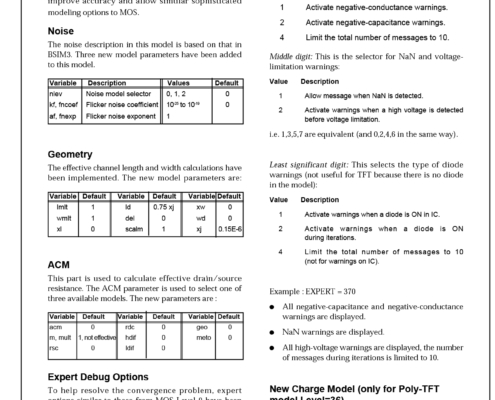
New Parameters for TFT model: Amorphous (Level=35) and Poly-Silicon (Level=36) TFT
Several enhancements have been made to the TFT models in SmartSpice. New parameters have been added to improve accuracy and allow simular sophisticated modeling options to MOS.
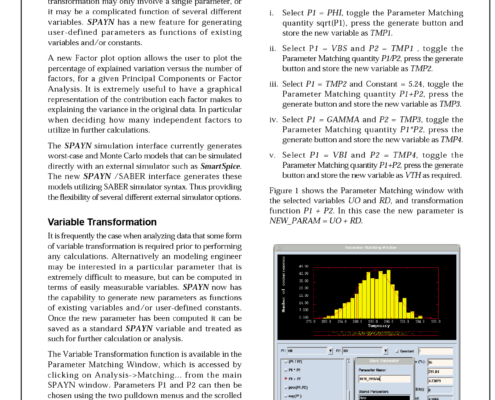
Enhanced Statistical Features in SPAYN Version 1.7.2
When performing statistical analyses it is often necessary to compute transformations of the observed data. This transformation may only involve a single parameter, or it may be a complicated function of several different variables. SPAYN has a new feature for generating user-defined parameters as functions of existing variables and/or constants.
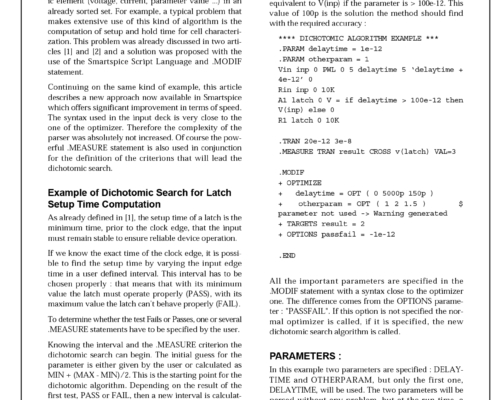
New Built-in Dichotomic Search Algorithm in Smartspice
General purpose dichotomic search method is often requested by designers when they want to find a specific element (voltage, current, parameter value ...) in an already sorted set. For example, a typical problem that makes extensive use of this kind of algorithm is the computation of setup and hold time for cell characterization. This problem was already discussed in two articles [1] and [2] and a solution was proposed with the use of the SmartSpice Script Language and .MODIF statement.
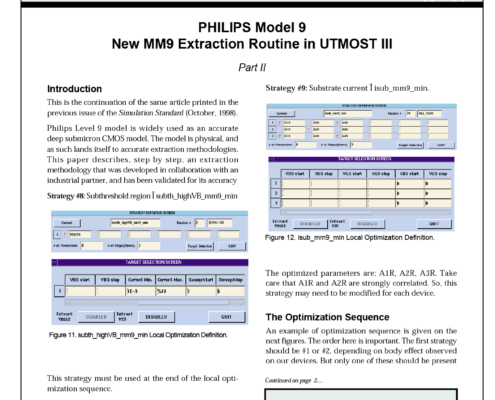
PHILIPS Model 9 New MM9 Extraction Routine in UTMOST III
Philips Level 9 model is widely used as an accurate deep submicron CMOS model. The model is physical, and as such lands itself to accurate extraction methodologies.
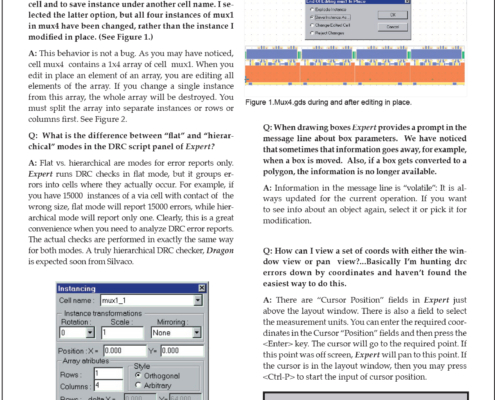
HINTS & TIPS – December 1998
Q: I took the example file mux4.gds from Expert's installation and tried the Edit-in-place operation. I entered into an instance of mux1, modified a box in it and exited from EIP. There are options to change the edited cell and to save instance under another cell name.
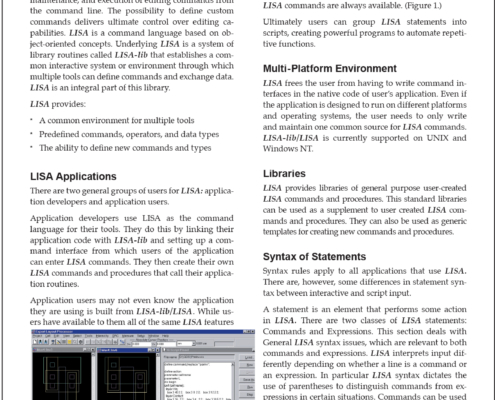
LISA Powerful Script language for Expert
This article introduces the LISA (Language for Interfacing Silvaco Applications) command language and gives an overview of LISA features.
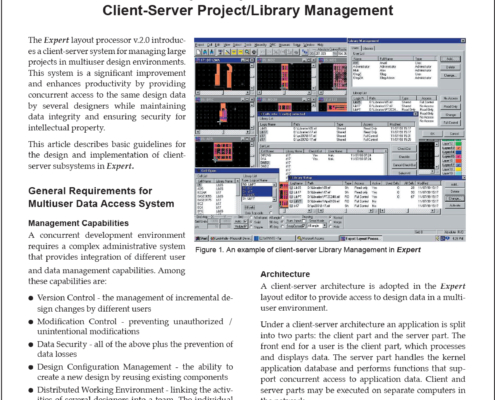
Expert Expanded with Client-Server Project/Library Management
The Expert layout processor v.2.0 introduces a client-server system for managing large projects in multiuser design environments. This system is a significant improvement and enhances productivity by providing concurrent access to the same design data by several designers while maintaining data integrity and ensuring security for intellectual property.
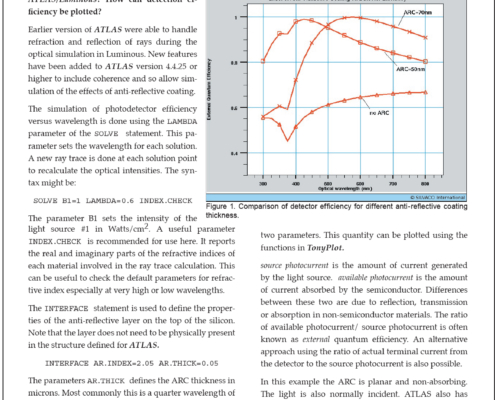
HINTS & TIPS – November 1998
Q: How can anti-reflective coatings be modeled when simulating photodetectors in ATLAS/Luminous? How can detection efficiency be plotted?A: Earlier version of ATLAS were able to handle refraction and reflection of rays during the optical simulation in Luminous.
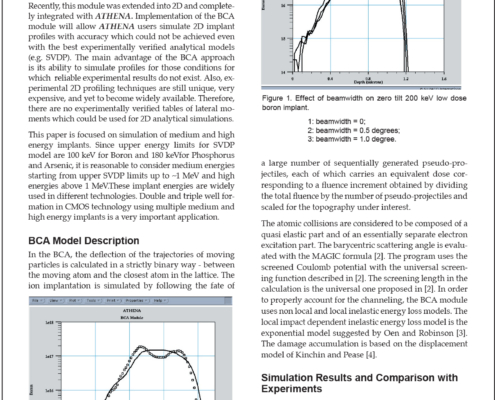
New Model for High Energy Implants in ATHENA
In our earlier paper [1] a new Binary Collision Approximation (BCA) module was described. It was shown that models and algorithms implemented into the BCA model allow to accurately predict implant profiles with significant channeling as well as the dose and screen oxide thickness dependencies for relatively low implant energies.
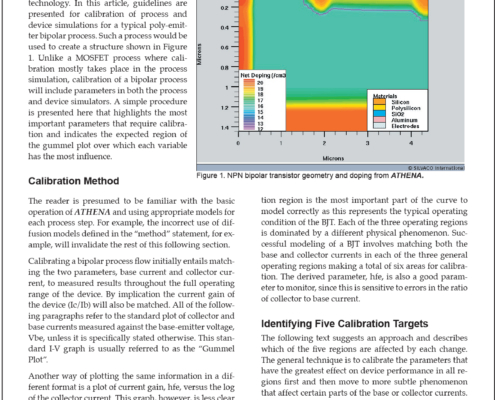
Calibrating a Typical Bipolar Process Flow
A common request from TCAD (Technology Computer Aided Design) users is advise on how to calibrate the process flow and device simulator to a particular technology. In this article, guidelines are presented for calibration of process and device simulations for a typical poly-emitter bipolar process.
